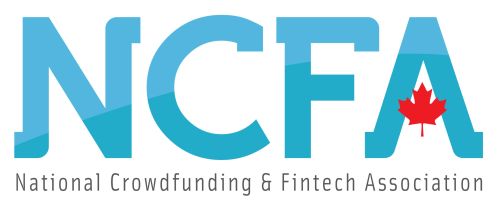Interview Begins
“It is important to help banks understand the benefits and use cases that they can build on top of Open Banking.”
— Stephane Nouy, Co-Founder Moneythor (HQ: Singapore)
Mahi Sall: Please tell us a bit about yourself?
Stephane Nouy: Stephane Nouy, co-founder of Moneythor, Chief Client Delivery Officer and Managing Director Europe.
Moneythor powers Open Banking use cases in several countries and across various regimes such as Europe (PSD2), Australia (CDR) and Singapore (SGFinDex) enabling banks and fintech firms to offer improved functionality and experience to their retail & business customers through their digital banking services.
The Moneythor solution has been deployed globally by large banks such as ANZ, CIMB, DBS and Standard Chartered among others, fintech firms such as Raiz as well as digital banks such as Orange Banque. It supports Open Banking natively.
Powered by real-time data analytics and behavioural science techniques, the prime focus of the Moneythor solution is in the delivery of data-driven personalized, contextual and actionable recommendations, insights and nudges to end-users, preconfigured or uniquely crafted by the financial institutions. Examples of these include money management features, budgets, goals, automated savings alerts, predictive forecasts, financial literacy material, relevant offers and more.
Mahi Sall: Common Rules represent a key component of Open Banking System Design, with the premise that they create a level playing field which eliminates the need for bilateral arrangements between Open Banking participants.
Speak about situations that would call for bilateral arrangements in an open banking environment that thrives on common rules.
Stephane Nouy: More than bilateral arrangements, what we often see is a situation whereby the Open Banking common rules do not cover the full spectrum of banking data (ex: PSD2 not including all types of accounts), forcing aggregators and Open Banking data consumers to continue using scraping techniques. This should encourage the Open Banking regulation to include a broader set of financial data.
Mahi Sall: Another key component of Open Banking System Design is the Accreditation Process. Canada’s Advisory Committee on Open Banking recommended to exempt federally regulated banks from the accreditation process, and similar consideration for provincially regulated financial institutions to be discussed.
What major frustration points relative to the accreditation process can be anticipated and how to address them?
Stephane Nouy: If some banks are exempted from the mandatory opening of their data through standard-based Open Banking APIs, the aggregation process will be tempted to continue relying on scraping techniques.
Compliance with Open Banking is still too often seen by banks as a regulatory effort more than a commercial opportunity, adding to their technical roadmap with no clear return on investment. It is important to help banks understand the benefits and use cases that they can build on top of Open Banking, and thus transform this regulatory requirement into a business opportunity.
Mahi Sall: The third key component of Open Banking System Design are Technical Specifications & Standards with two approaches currently dominating the landscape: single standard approach (e.g. UK, Australia) and multiple standards (e.g. US, EU). Canada’s Advisory Committee left both approaches open for exploration. Can you speak to the advantages and shortcomings of these approaches?
Stephane Nouy: Although the EU allows multiple technical standards, they all comply with the same rules and functional coverage. This doesn’t impact the services built on top of Open Banking, it instead offers more technical flexibility allowing the banks to select and work with their preferred technical partner.
Mahi Sall: What are some of the lessons you’ve learned in terms of Open Banking test designs and implementation.
Stephane Nouy: The experience in the EU clearly shows that the banks were late in complying with the PSD2 Open Banking directive, and that Third Party Providers (TPPs) therefore struggled to perform their tests and roll out their solutions. TPPs also faced multiple bugs and issues when attempting to consume the banks’ APIs, and they suffered from this. They are however instrumental in the success of any Open Banking ecosystem, and their work should be facilitated more than we’ve seen with the PSD2 roll-out in Europe. For instance, building a sandbox with a set of automated tests that the banks should connect to and that would guarantee the correct deployment of their APIs would be an interesting step to minimize the issues encountered by TPPS in their implementations.
Mahi Sall: As in other jurisdictions, financial inclusion is high on Canada’s Open Banking agenda. Please share examples where Open Banking failed to deliver on this metric.
What are some of the key lessons learned that Canada could benefit from?
Stephane Nouy: Financial inclusion has not always been a primary objective of Open Banking, with the initial services developed on top of Open Banking clearly targeting digital savvy and multi-banked consumers. An initial use case of Open Banking has often been around credit assessment and scoring, for example to support the seamless approval of a loan or BNPL proposition, again not particularly focused on financial inclusion, although easier access to credit is a useful feature within this segment too.
You may want to check the “Cresus – BGV (Budget Grande Vitesse)” initiative in France, promoting financial inclusion and financial education. It helps connect banks, identify recurring income and expenses easily, manage budgets, track the available balance and the end of month projection, and calculate the social aids being available.
Mahi Sall: Chief among the factors affecting the take-off of Open Banking is low adoption by consumers. What could Canada do differently than other jurisdictions in order to pre-empt this risk?
Stephane Nouy: Multiple factors can explain the low adoption (non-exhaustive list):
- Banks are usually lobbying for increased security, which can lead to a slower or limited adoption. E.g.: if the user needs to update their credentials or provide their consent too often, she may be tempted to abandon the service.
- Users may be afraid of sharing their credentials with a TPP. More public communication and explanation could be provided by the authorities on the service and the certified participants.
Mahi Sall: Drawing upon your observations, what are some of the quick wins in terms of Open Banking use cases that banks and fintechs should prioritize rolling out?
Stephane Nouy: Digital banks are usually not the primary bank of their clients, this limits the level of services and personalization that they can provide. Through Open Banking, they can access all their customers’ transactions and therefore provide them with insights, recommendations and nudges relevant to them.
Credit scoring (based on Open Banking data analysis) is also one of the top use cases deployed.
Money transfer across banks through Open Banking is also a use case that we see more and more, allowing fintechs to propose advanced solutions without the bottleneck and limitation of a complex fund transfer process through the existing (complex and expensive) payment flows and channels.
Cashback services and/or personalized merchant offers are also another use case developed on top of Open Banking data, offering good incentives for the customers to share their data.
Mahi Sall: What role does talent play in developing a thriving Open Banking system?
Stephane Nouy: Talent is critical to invent and develop the best use cases and boost the Open Banking adoption. We believe that the regulator should provide strong support to the fintech ecosystem (e.g.: strong guidance for the TPP enablement process, so that fintech can stay focused on their specific functional use cases).
Mahi Sall: Speak about Open Banking limitations and the most common misconceptions people have about it?
Stephane Nouy: As mentioned previously, the security restrictions imposed by the banks (eg: changing credentials or providing consent too often) can really kill the fluidity of the use cases invented by TPPs and thus the Open Banking adoption.
Limitations will happen whenever data is missing in the Open Banking specifications (eg: not all accounts, MCC codes for the transactions).
“ It’s undeniable that Open Banking is a game changer in the way financial services are offered to consumers and businesses.”
Mahi Sall: What does Open Banking mean to banks and fintechs, and how does it affect the relationship between the two?
Stephane Nouy: Traditional banks clearly see Open Banking as a threat of being disintermediated, while this is a great opportunity for fintechs. This leads to a conflictual relationship (except when the fintech sells its services to help the bank innovate).
Please note that:
- Digital banks would also see an opportunity in Open Banking.
- Credit scoring (based on Open Banking) use cases is something that traditional banks may find useful for their consumer credit activities.
- We have seen lots of consolidation scenarios, where the banks would invest in the top TPPs.
Mahi Sall: How could banks and TPPs best prepare for Open Banking and extract the most value out of it?
Stephane Nouy: Rather than a defensive attitude, banks should embrace Open Banking, and try to lead the game by providing value-added services to their customer base e.g. personalization based on the 360 degree analysis of the customers’ spendings, etc.
As noted previously, we have seen lots of consolidation scenarios, where the banks would invest in the top TPPs.
Mahi Sall: Given the very tight schedule of Canada’s Open Banking roadmap, where do you think the balance must be struck to meet deadlines without significant trade-offs?
Stephane Nouy: A strong follow-up of the banks’ progress should be performed, the rest of the Open Banking stakeholders (TPPs and fintechs) is indeed dependent on this.
A strong lobbying from the different actors should be anticipated, we recommend carefully listening to TPPs, they are not only instrumental for the Open Banking deployment, but also the experts who will immediately identify the bottlenecks and technical problems.
See: NCFA Open Banking Implementation Risks with Senator Colin Deacon and Mahi Sall
Mahi Sall: In order to ensure compatibility and interoperability at regional/international level, what must be thought of and accounted for at this early stage of Open Banking in Canada?
Stephane Nouy: Interoperability is today only seen in specific zones (eg: EU), and hardly between different Open Banking jurisdictions. Some thoughts:
- Problematic of the schema compatibility : by anticipation Canada should build upon the existing Open Banking deployment and have a compatible schema.
- Data residency: this can be a limitation for international interoperability.
# # #
Links you may be interested in:
Mahi Sall is an Ambassador of the National Crowdfunding & Fintech Association of Canada “NCFA”, and an Expert on Fintech-Bank Partnerships. He is based in Berlin, Germany.
 The National Crowdfunding & Fintech Association (NCFA Canada) is a financial innovation ecosystem that provides education, market intelligence, industry stewardship, networking and funding opportunities and services to thousands of community members and works closely with industry, government, partners and affiliates to create a vibrant and innovative fintech and funding industry in Canada. Decentralized and distributed, NCFA is engaged with global stakeholders and helps incubate projects and investment in fintech, alternative finance, crowdfunding, peer-to-peer finance, payments, digital assets and tokens, blockchain, cryptocurrency, regtech, and insurtech sectors. Join Canada’s Fintech & Funding Community today FREE! Or become a contributing member and get perks. For more information, please visit: www.ncfacanada.org
The National Crowdfunding & Fintech Association (NCFA Canada) is a financial innovation ecosystem that provides education, market intelligence, industry stewardship, networking and funding opportunities and services to thousands of community members and works closely with industry, government, partners and affiliates to create a vibrant and innovative fintech and funding industry in Canada. Decentralized and distributed, NCFA is engaged with global stakeholders and helps incubate projects and investment in fintech, alternative finance, crowdfunding, peer-to-peer finance, payments, digital assets and tokens, blockchain, cryptocurrency, regtech, and insurtech sectors. Join Canada’s Fintech & Funding Community today FREE! Or become a contributing member and get perks. For more information, please visit: www.ncfacanada.org
- Coinsmart. Europe’s Best Bitcoin and Crypto Exchange.Click Here
- Platoblockchain. Web3 Metaverse Intelligence. Knowledge Amplified. Access Here.
- Source: https://ncfacanada.org/canadas-open-banking-journey-interview-with-stephane-nouy-co-founder-moneythor-hq-singapore/




